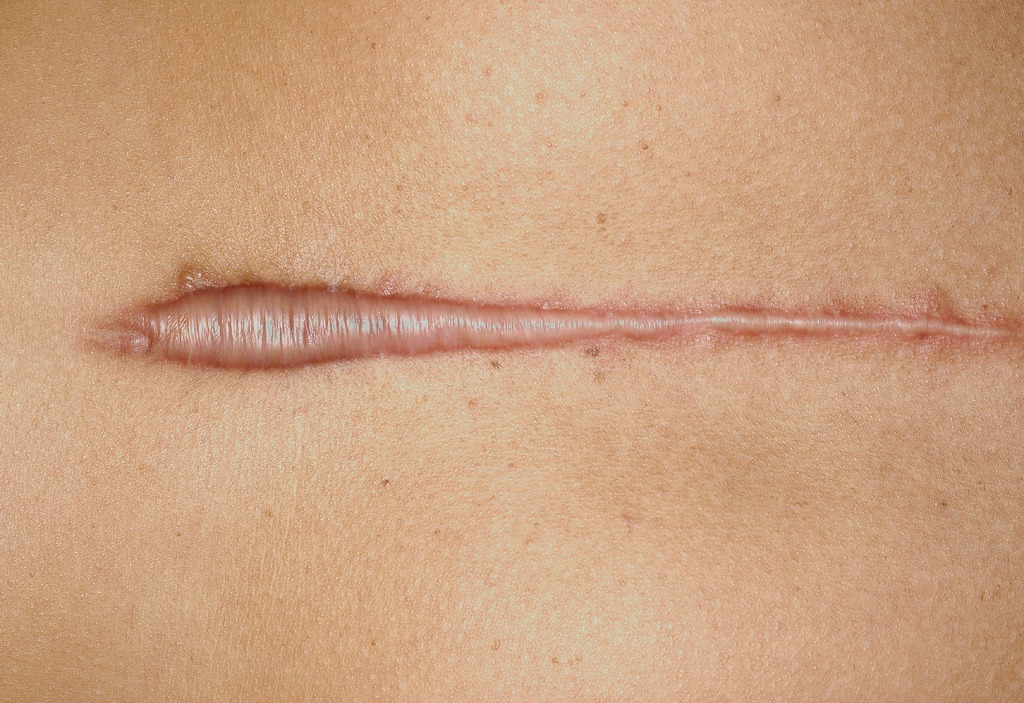With scars being so incredibly unique and dependent on so many different factors like genetics, age, metabolism and more, it’s hard to tell the difference between each one. Since every scar is different, the scar treatments and healing processes are unique and specific as well—that’s why it’s important to understand the differences between the three common scar types: keloid, hypertrophic, and atrophic.
Most scars can be classified as either hypertrophic or atrophic. The easiest way to remember the difference is to look at the words themselves. The root word, -trophic, just means stimulating activity or growth, in this case, of fibrous skin tissue. The other part of the words, hyper- and a-, is where the key difference between the two types is distinguished.
Hyper- means over or too much, so hypertrophic scars are scars with too much growth which leads to thick, raised lesions on the skin. Sometimes there’s an overproduction of collagen (fibrous tissue) when the body is attempting to heal a flesh wound--this explains and accounts for the scar types deemed hypertrophic.
Keloids are a type of hypertrophic scars. The main difference, though, is that keloids spread beyond the original wound site whereas general hypertrophic scars don’t. They are most likely to appear on the chest, shoulders, back, and earlobes in smooth reddish-purple formations.
On the other hand, a- means a lack or decrease, so atrophic scars are scars with a lack of growth which leads to indentations, craters, or pits in the skin. This is due to a loss of dermal tissue and not enough collagen to heal the wound.
Knowing the reasoning behind the differences of these main types of scars is crucial to the scar treatment process. Most scar products and treatments are done to reverse the process that resulted in the scarring. So if you have a hypertrophic scar, the treatment would aim to reduce the production of collagen and possibly kill the excess skin cells found on the scar. But if you have an atrophic scar, the treatment would be quite the opposite, aiming to stimulate the production of collagen and encourage skin cell growth where it is lacking.
A few popular scar treatments for atrophic scars are dermabrasion, soft tissue injection, and silicone gels. Dermabrasion is a process that buffs away old, dead cells and promotes the growth of new healthy cells and better collagen production. Soft tissue injections are pretty much what they sound like: new fibrous tissue is injected into the scar site to rebuild elasticity and fullness. Silicone gels work to restore hydration levels while also improving the appearance of atrophic scars by filling the indentations, craters, and/or pits.
Hopefully this overview helps you understand the difference between keloid, hypertrophic, and atrophic scars and also helps you understand the differences in the scar treatments for each of them. Be sure to talk to your dermatologist for more information and scar treatment options for your specific case! Then read more about scar healing techniques and get your dermatological questions answered by checking out our Scar & Dermatology Resources for Patients.
Written by: Jordan Rawlinson



